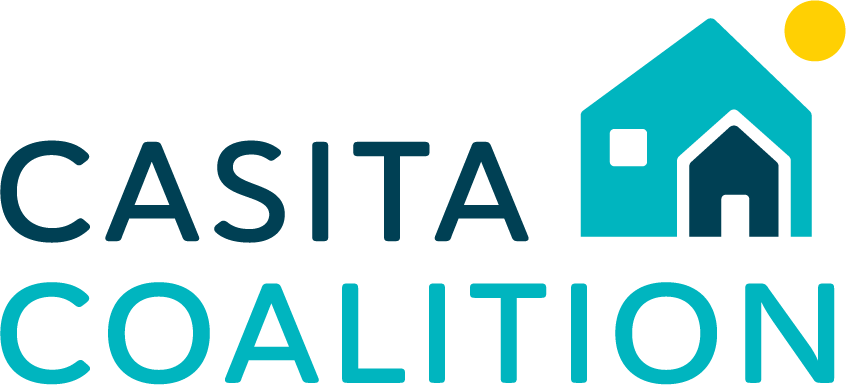Housing Solutions Are Climate Solutions: Four Sustainability Experts Weigh in on the Future of Small Housing
As Governor Newsom Tweeted earlier this Fall, “housing solutions are climate solutions.” When it comes to small housing, this couldn’t be more true. We spoke with four experts on small housing and climate change at the end of September. Here are their thoughts on how to build small housing with a focus on sustainability, carbon footprint, and climate resiliency - without sacrificing affordability:
Climate Solution #1: Make Small Homes Affordable and Sustainable
Jake Fry, Small Housing BC
Jake Fry started his nonprofit, Small Housing BC, with a simple question: how can we make sustainable, comfortable homes that don’t negatively impact the planet? To answer this question, Small Housing BC undertook a study in partnership with several energy modeling companies, looking at the biggest emitters of carbon in three example homes (wall assembly, the heating system, and the foundation system). They discovered that by switching to concrete piles, a 2x6 wall system, and electric heat, the impact on the building’s carbon footprint was significant - nearly a 90% reduction of carbon footprint. This method of homebuilding was also found to be significantly less expensive.
Jake believes that this is the biggest missed opportunity in the ongoing discourse about ADUs right now. He is currently working on a Pilot Program with the City of Vancouver to implement this new method of building sustainable homes, as well as working on other sustainability boons like leveraging groundwater and the sewer system to create more environmentally-friendly outcomes. He explained that plans for climate-optimized ADUs could be made available by cities and counties as part of pre-reviewed plans programs.
Climate Solution #2: Understand the Energy Code to Build More Sustainable (Preferably All-Electric) Small Homes
Nick Brown, BuildSmart Group
Nick Brown is a certified energy analyst and energy consultant. Through his work in Long Beach, he seeks to understand the ways in which ADUs are somewhat unique in the energy code compliance area, and how to make sure that energy codes are fair towards ADUs.
Under the current energy code, there are several helpful provisions for ADUs (conversions of existing unconditioned space qualify as additions and therefore don’t require solar (including detached garage conversions,) existing walls becoming part of ADU only need cavity insulation instead of continuous rigid foam install, etc.). The 2022 Title 24 compliance cycle has added several new provisions, including:
Solar only required for new detached ADUs, and not required for units under 1.8KW
Electric tankless water heaters allowed in units under 500 sqft (combined w/a point of use distribution system) AND 120V heat pump water heaters are allowed in units with one bedroom or less
Whole house fans aren’t required in units under 500 sqft
One of the easiest ways to comply with energy codes and build greener ADUs is to go all-electric. Not only do these units cost less to build and cost less to operate with the help of solar, but they simplify utility connections, provide better indoor air quality, and have 41% lower greenhouse gas emissions. ADU living is generally more energy efficient; Nick has been studying his own all-electric ADU and has pulled some impressive data to show how much more energy-efficient it is (25% less electricity usage overall).
Climate Solution #3: Understand Environmental Risks to Build Climate-Resilient Housing
Bob Raymer, CBIA
One of California’s biggest climate concerns when it comes to housing? Fire risk. Bob Raymer covered the requirements for ADUs under Wildlife Urban Interface (WUI) standards, and made recommendations for how homeowners can assess their risk and make smart small housing construction choices.
New detached ADUs in California must comply with WUI standards, as do ADUs attached to WUIS-compliant homes. ADUs attached to non-WUIS-compliant homes need not comply under current codes, but it is important to understand what the standards are as you construct new housing in order to protect your property. By adding WUIS-compliant vents, a Class A fire rating roof, double-paned glass windows with at least one tempered pane, and a few other safety updates, homeowners significantly reduce their risk of fire damage on the inside of the dwelling, as these elements keep embers and fire outside the home.
The Fire Marshall has a handbook with recommended construction products that comply with WUI standards, updated every six months. This is a great place to start, and can save homeowners a lot of time if the planning department is questioning whether their building plans meet WUI standards.
This may soon become an important construction consideration for more California homeowners, as the Fire Marshall is currently required to update the SRA and LRA maps and provide more information about local responsibility. These maps are currently rolling out and are estimated to cover roughly half the State (doubling the previous area where WUIS building standards apply). Visit https://osfm.fire.ca.gov/ for more information.
Climate Solution #4: Use Climate-Resilient, Environmentally-Friendly Building Materials
Ken Calligar, Resilience ADU
Many climate-resilient building solutions are also environmentally-friendly - like the lightweight structural concrete insulated panels produced by Ken Calligar’s company, Resilience ADU. The Class A fire resistent panels can be used for exterior walls, interior bearing walls, intermediate floors, and roofs, creating ADUs that can survive extreme weather events as well as fires.
The webinar is available to watch here.
Welcome, new members!
Casita Coalition welcomed four new business members in September, including:
UE Planning
Jay Cad
Pacific Public Affairs
Dirt to Keys
Welcome to Casita Coalition! We look forward to ongoing conversation and collaboration with you all!
To join Casita Coalition, click here.
